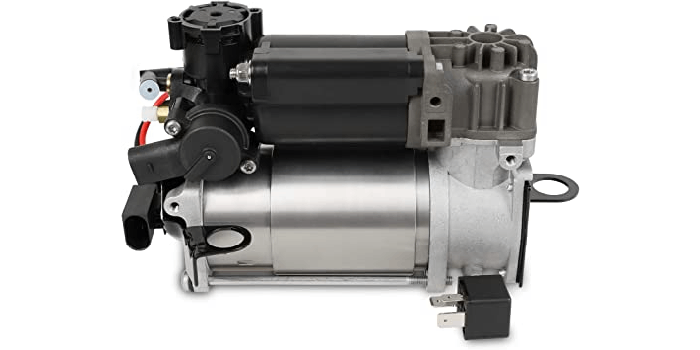Get Your Free Quote
- Best Price Guarantee Buy with confidence because you aren't getting a better price than this.
- Free Shipping
Enjoy the luxury of free shipping on orders above $299. - A Grade Quality Used Car Parts
Avail the best OEM Auto parts & components that are just as new. - Our Friendly Parts Specialist will get you what you need !!
Car Suspension Compressor

Suspension Compressor/pump
The country's cargo shipments ride on air, and now your car can, too. Air suspension systems have long been used in the trucking world, but in the last decade or so, they've moved into the commercial world. Motorcycles, all-terrain vehicles, custom cars, performance cars -- even everyday commuter cars -- are using the suspension systems.
Changes in technology mean that systems are no longer clunky, slow and imprecise. Instead, they use fast, precision-based technology with advanced electronics that control everything from ride height to bag pressure, offering a smooth, controlled drive.
And it's about time, as the car's suspension system is an often-overlooked area. From a comfort and safety standpoint, your car's suspension is integral to how your car drives. Shock absorbers and coil springs help absorb and direct road force, maintaining wheel oscillation, jounce and rebound.
However, every time you add or take away weight to a vehicle, speed up or slow down, or turn left or right, this challenges what the shock absorbers and springs are capable of. Traditional stock shocks and springs are designed and installed with only a fixed set of situations in mind.
Air suspension systems essentially replace a vehicle's coil springs with air springs. The air springs are simply tough rubber and plastic bags inflated to a certain pressure and height to mimic the coil springs. But the similarities end there. By adding in an on-board air compressor, sensors and electronic controls, today's air suspension systems provide several advantages over all-metal, conventional springs, including near-instant tuning, and the ability to adapt handling to different situations and vary load capability.
Whether the system is manual or electronic, or installed by a weekend mechanic or a seasoned tech, air suspension can lower a car to improve its street cred, even out a heavy payload, or simply improve the ride of a vintage Detroit metal street monster.
(786) 550-5786
Air Suspension System Components
Early versions of air suspension systems were relatively simple. Air bags replaced the coil springs. The bag was inflated to the correct pressure or height with an outside compressor through a valve on the bag. Changes in technology and use added more components, and control, to the system. But today's air suspension systems all have a basic stock of similar components that vary little from maker to maker. The differences come mainly in controls and ease of installation.
Air bag material has changed little over time. The bag is a composite of rubber and polyurethane, which provides structural integrity, air-tight construction, toughness against light abrasion from road debris and sand, and resistance to salt and chemical corrosion.
The bags come in three basic shapes:
Double-convoluted bag. This bag is shaped like an hourglass. The design allows for a little more lateral flexibility than the other designs.
Tapered sleeve. This airbag performs the same as any other but is designed to fit in a tighter area and offers a little more adjustability on ride height.
Rolling sleeves. This is also a specific-application air bag. The pertinent differences between the two sleeves are really about ride height and spring control, and what's best for the vehicle and the application.
Most air suspension systems now come with an on-board compressor. The compressor is an electric pump feeding air to the bags through a series of compressed air lines. The compressor is generally mounted on the vehicle's frame, or in the trunk. The vast majority of compressors come with an attached drier.
The compressor works by drawing outside air into the pump, compressing it and moving it to the bags. Outside air is often laden with moisture, and moisture can wreak havoc in a closed system. The drier uses a substance known as a desiccant to absorb as much moisture from the air as possible before the air is sent through the system.
Simpler compressor systems rely on the compressor itself to maintain, increase or decrease pressure. More advanced systems add an air tank to maintain pressure and provide an even transition between pressures. Compressors can be activated manually or automatically, and controlled solely by the driver, automatically through an electronic system, or a combination of both.
(786) 550-5786